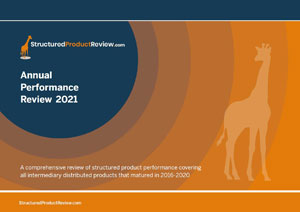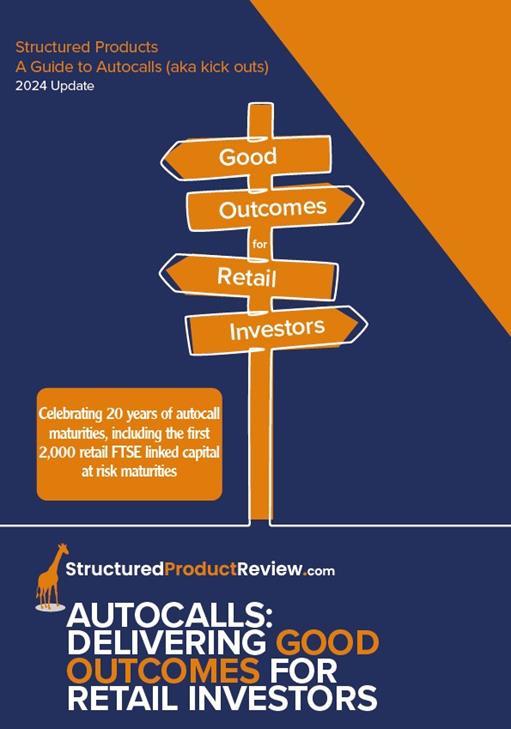Back in 2017 the FTSE 100 Index had recovered from the dip on the back of the Brexit referendum, and market confidence appeared to be relatively high. The average closing level of the FTSE 100 throughout 2017 was 7,379.87, up 13.99% from the previous year’s average. The prospect of the FTSE 100 Index reaching and exceeding 8,000 points didn’t seem too distant.
In 2018 the FTSE 100 reached its highest ever closing level of 7,877.45 but the potential to break through the 8,000 level subsequently diminished.
Markets around the globe crashed during the Coronavirus pandemic, and despite the subsequent recovery, the war in Europe and wider economic and geopolitical issues continue to weigh heavily on market sentiment. Generally, the prospect of the FTSE 100 Index surpassing 8,000 points now feels somewhat further away than it did in 2017.
A number of hurdle autocalls issued in 2017 struck at such a level where that they require the FTSE 100 to surpass the 8,000 mark, and then some, in order to trigger a positive maturity. We have listed below three such 10:10 Plans issued in late 2017. Having a maximum term of ten years means each of these have five years left of their maximum term, during which time a notable level of market growth will be required to trigger a positive maturity.
|
Plan |
Required FTSE 100 Level |
Final Observation Date |
Potential Payout on Final Date |
Capital Protection Barrier Level |
Surrender Value per £1 Unit* |
|
Mariana 10:10 Plan October 2017 (Option 3) |
8,275.16 |
06/10/2027 |
112.5% |
5,266 |
1.2146 |
|
Mariana 10:10 Plan November 2017 (Option 3) |
8,118.75 |
17/11/2027 |
111% |
5,166.48 |
1.2404 |
|
Mariana 10:10 Plan December 2017 (Option 3) |
8,351.93 |
22/12/2027 |
115% |
5,314.86 |
1.2288 |
Data sourced from StructuredProductReview.com. *Indicative prices as at 30/08/2022.
Whilst it is almost certain that positive maturities for these plans will not be triggered on their observation dates later this year, the extended maximum investment term of ten years is a key feature of the 10:10 Plan, and this is likely to prove essential in this instance. In these early 10:10 Plans, Option 3 required the index to be 10% higher (5% for later issues) than the initial index in order to trigger a positive maturity. Therefore, by design, Option 3 was expected to have a longer duration than the other options that required minimal, or no rise in the market.
No one foresaw the coronavirus pandemic, the Russian invasion of Ukraine or many of the other market influencing factors, but even the most bullish of investors know to expect the unexpected. A longer investment time horizon will better protect investors from the ups and downs of the stock market by allowing time for a recovery from market shocks.
With autocalls, a longer time horizon also means more opportunities to mature positively and the nature of snowballing coupons means that an additional fixed percentage is added to the potential gain for each year the investment runs – with regard to the examples above, the annual gains are significant at 11.25%, 11.1% and 11.5% respectively. Should it take until Q4 2027 for the FTSE to rise sufficiently to trigger a positive maturity for each of these plans, they will mature with very substantial gains of 112.5%, 111% and 115% all on the back of what might be a rise in the Index over the ten years of little more than 10%.
Of course, there is the risk that the FTSE 100 Index doesn’t rise to the required level before the tenth anniversary, in which case the original capital will still be returned unless the Index falls significantly further and ends the ten years more than 30% below the initial level. In this case capital will be reduced in line with the fall.
Behavioral finance, loss aversion theory specifically, suggests that some investors tend to prefer avoiding losses, than acquiring equivalent or greater gains. If that was the case, investors in the 10:10 2017 (Option 3) plans may elect to surrender their plans early and bank the current surrender value – which should reflect the inherent value of the remaining contract.
We promote these investments as maximum ten-year plans and advocate a ‘buy and hold’ approach, with the ten-year term potentially proving more valuable than ever because of current and recent events. However, the three plans listed above have indicative surrender values that would result in gains of at least 20% despite the FTSE being lower than when the investment began. The result is that surrendering these 10:10 Plans now will produce an annualised return of around 4% per annum. Considering that a triggered maturity is clearly some time away and the index has fallen over the holding period, few would argue this isn’t a reasonable outcome in the circumstances.
The 10:10 Plan offers three investment options – Option 1 can mature in falling markets, Option 2 can mature in flat markets and Option 3 requires a 5% rise in the index to mature (the earlier 10:10 Plans in 2017 required a 10% rise).
Full details on the latest 10:10 Plan, including Lowes’ Summary Papers, can be found here.
Structured investments put capital-at-risk.
Past performance is not a guide to future performance.
Disclosure of interests: Lowes has provided input into the concept, development, promotion and distribution of the 10:10. Lowes has a commercial interest in these investments as a result of its involvement. Where Lowes is involved in advice on these investments to retail clients, it will not receive benefit of any fees for its involvement, other than those fees payable by the client to Lowes.
Also in this section
- How old is too old? Are structured products to die for?
- Product focus - October 2024
- Q3 2024 Issuance
- Q3 2024 maturity results
- A share of spread bets on steroids?
- Product focus - September 2024
- Maturities of the month - August 2024
- Right on time
- Product focus - August 2024
- Keep calm and zoom out
- 2,000 and counting
- Q2 2024 maturity results
- 20 years of autocall maturities
- Product focus - June 2024
- Fixed income or interest?
- Maturities of the month - May 2024
- The barrier debate - revisited
- Product focus - April 2024
- Maturities of the month - April 2024
- Time to call
- I don't believe markets are ever too high for Structured products!
- Notes on counterparty exposure
- Return of Nikkei
- Q1 2024 issuance
- Q1 2024 maturity results
- Structured Products – AAAAAGH!
- Hop in CIBC
- Re-enter Santander
- How to build a financial fortune - revisited
- Issuance in 2023
- Where's the risk?
- Questionable offerings
- Challenging the case against structured products - 'Loss of dividends'
- Navigating the investment landscape
- Challenging the case against structured products - Counterparty risk
- 6-year autocalls approaching final destination
- 1,750 FTSE capital at risk autocall maturities
- The leopard that changed her spots
- Q3 2023
- Challenging the case against structured products - Keydata
- Dilemmas for UK IFA's and the unique role of Structured Products
- 'High charges'
- Precipice bonds
- Intro
- FTSE 100 Contingent Income
- Indexing the indices
- Something different
- Investing through volatility
- 100 10:10s
- The best or worst?
- The 10%/25% 'Rule' that never was
- Structured products and the yield curve
- Fixed income: Capital at risk?
- Prospects for UK inflation - and fun with A.I!
- The Barrier Debate
- More Deposits for now
- Last of the Americans
- What if?
- Time heals all wounds, we hope...
- How to diversify portfolios using structured products?
- The Proof Is In The Pudding...
- Debunking Structured Misconceptions
- 1,500 FTSE Capital-at-Risk Autocall Maturities
- Q3 2022 Maturity Results
- What do we prefer?
- Deposits vs Capital ‘Protected’
- There’s time yet…
- Where did you invest your clients?
- A Six-Month Reflection
- Return of the Rev Con
- Happy 2nd Birthday FTSE CSDI
- Q2 2022 Maturity Results
- The best and worst yet still the best
- Critique my Suitability - Mariana 10:10 Plan June 2022 (Option 2)
- 10/10 for 55 10:10’s
- Q1 2022 Maturity Results
- 'How to build a financial fortune': a follow up
- Critique my Suitability - Mariana 10:10 Plan April 2022 (Option 2)
- 2021 Capital-at-Risk Autocall Maturity Review
- An unwelcome return...
- CSDI's First Birthday
- Bon Anniversaire
- Introducing the FTSE Custom 100 Synthetic 3.5% Fixed Dividend Index
- Q3 2021 Maturity Results
- Critique my Suitability - Mariana 10:10 Plan October 2021 (Option 2)
- Blurring the lines...
- Beware of false knowledge; it is more dangerous than ignorance
- Good news, bad news...
- Certainty is Certainly a Benefit
- Critique my Suitability - Mariana 10:10 Plan September 2021 (Option 2)
- A Twenty-Year Progression
- Q2 2021 Maturity Results
- Nine 8:8s Post Positive Returns in Falling Markets
- Critique my Suitability
- Q1 2021 Maturity Results
- Morgan Stanley’s Marvelous Maturity Medley
Current Products
We review the UK's retail structured investment sector, providing pertinent support for Professional Advisers and relevant research tools.
View all ⟶


